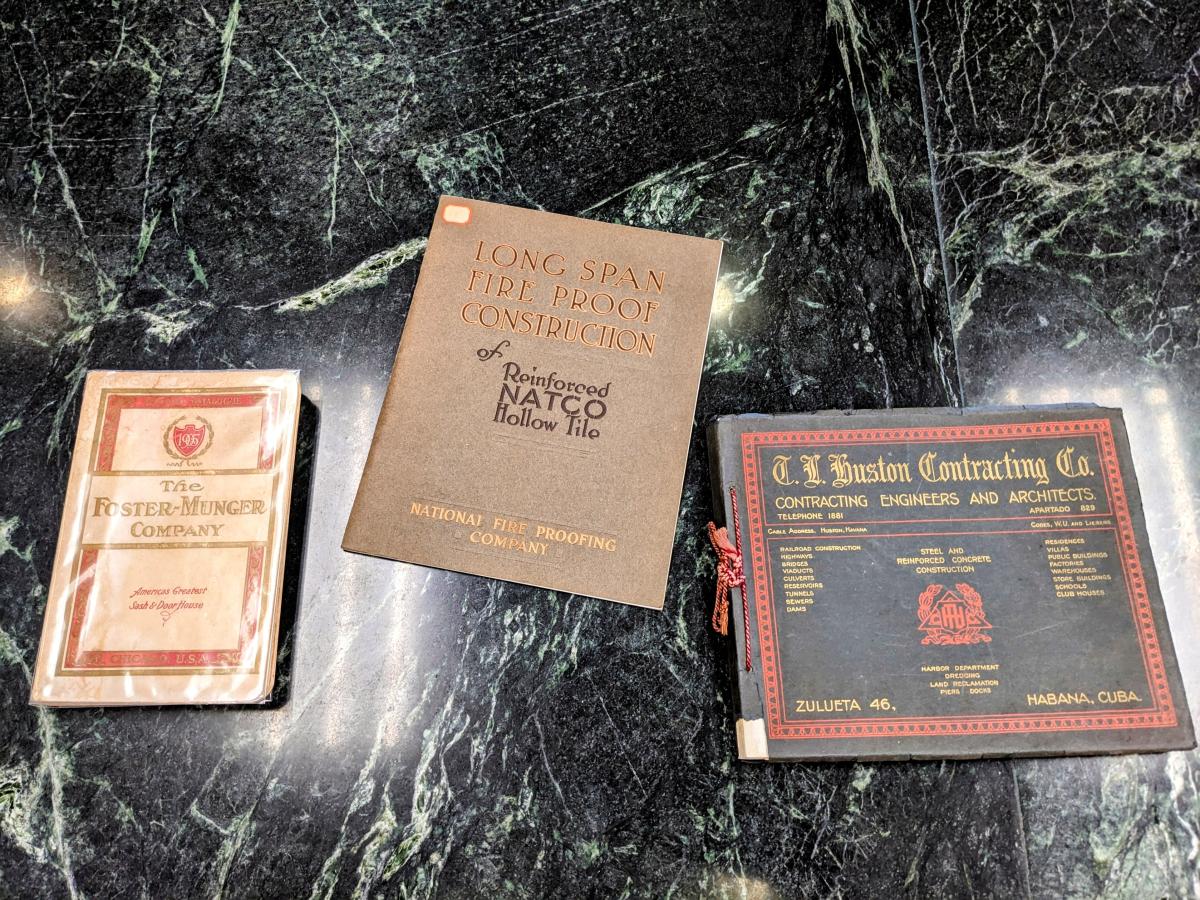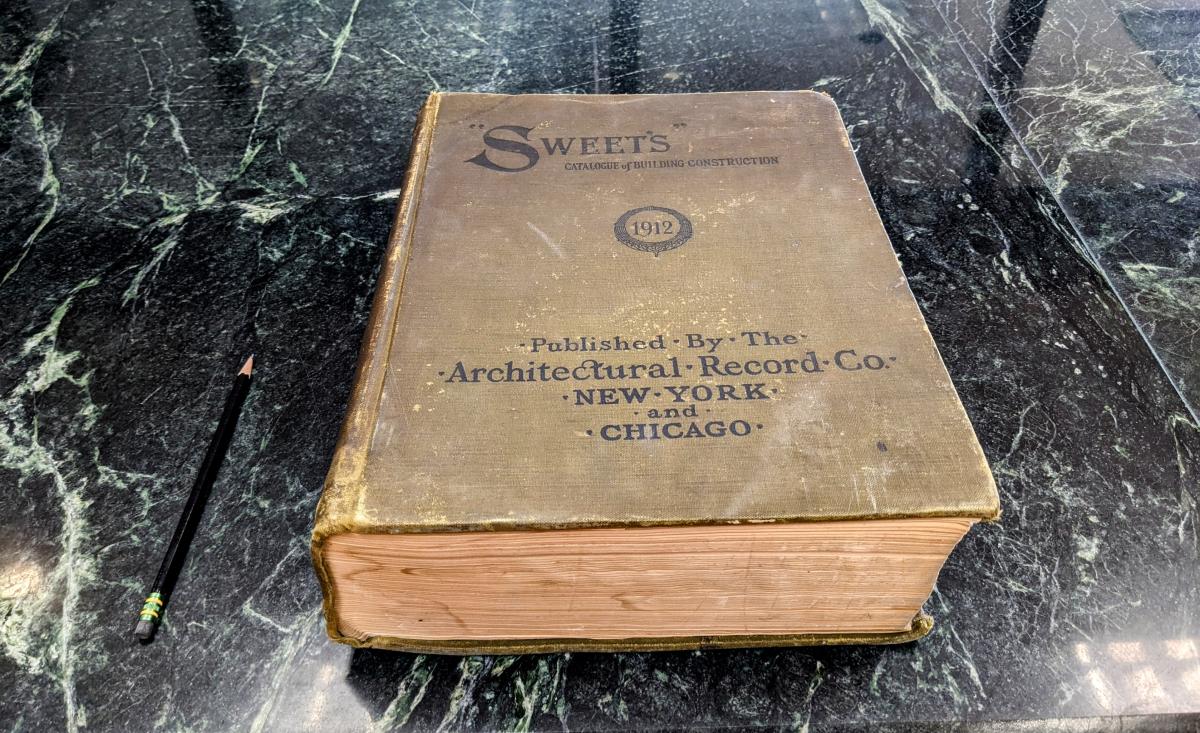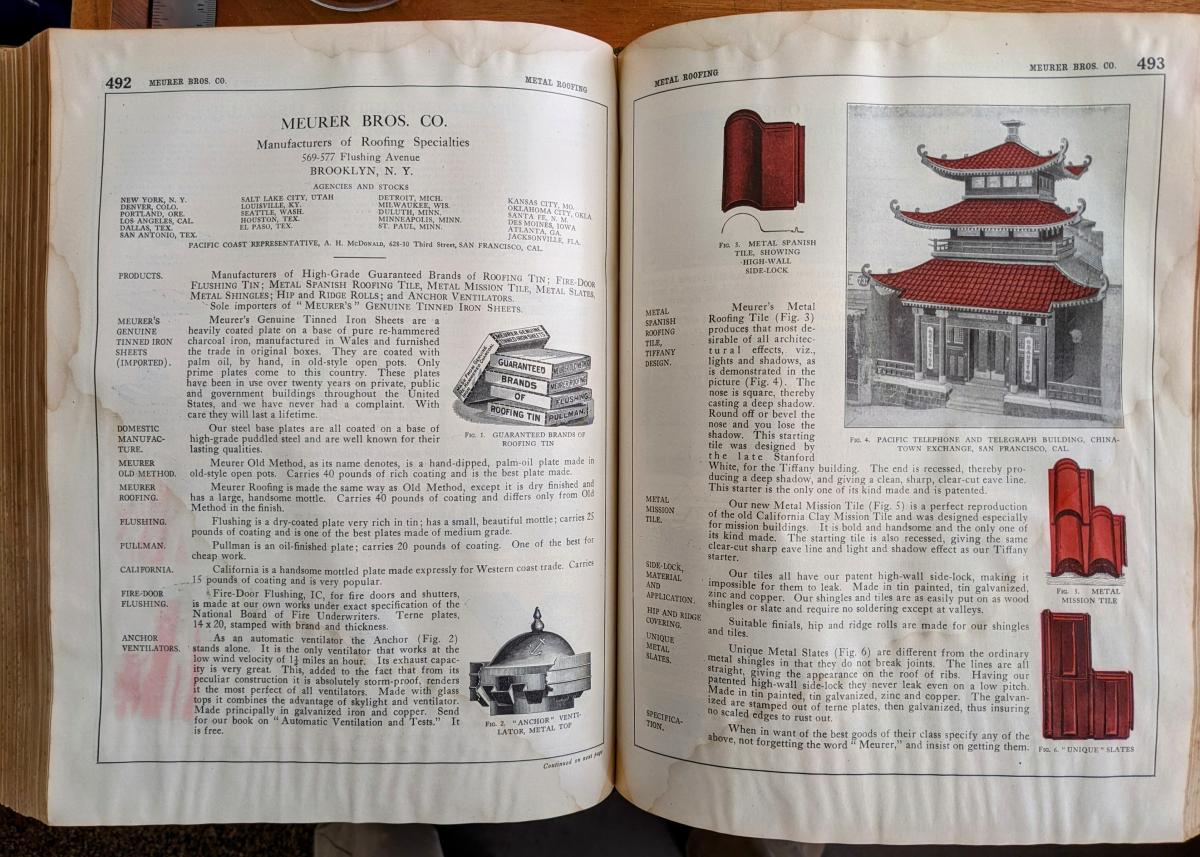Estimated at 80,000 collection items, Hagley prides itself on a very strong collection of trade catalogs. Our holdings cover almost every industry imaginable, and an abundance of trade catalogs is a good thing for a library that aims to document the range and extent of business activity throughout American history.

Yet what is good for a business history library today was not necessarily good for industry back in the day. Trade catalogs were produced in such heavy quantities that their very abundance could be problematic for business. Such was the case within the building industry, as architects were overwhelmed with trade catalogs from their potential suppliers in the early 1900s. After all, a trade catalog is supposed to simplify the product selection process. Receiving too many trade catalogs from too many competing suppliers, on the other hand, hampers that process. Sweet’s Indexed Catalogue of Building Construction was introduced in 1906 to remedy this situation. Published by Clinton E. Sweet’s Architectural Record Company, this “book of catalogues” brought order to chaos, and quickly succeeded in changing sales and purchasing practices within the industry.
 While Hagley Library holds a reprint of that first volume from 1906, the earliest original volume we hold is Sweet’s Catalogue of Building Construction for 1912. It is an informative yet massive volume that contains 1,738 pages and weighs a whopping 16 pounds. So, you can imagine the extent of the business problem Clinton Sweet sought to address!
While Hagley Library holds a reprint of that first volume from 1906, the earliest original volume we hold is Sweet’s Catalogue of Building Construction for 1912. It is an informative yet massive volume that contains 1,738 pages and weighs a whopping 16 pounds. So, you can imagine the extent of the business problem Clinton Sweet sought to address!
Sweet’s catalogs standardized both the presentation of vendor information and the ordering process in order to facilitate sales. Seen below is a sample view of the Meurer Bros. Co. entry from Sweet’s Catalogue of Building Construction for 1912.

But to turn things around once again, what was clearly good for business becomes problematic for a business history library. Sweet’s Catalog Service was so successful that their cumulative output of content throughout the 20th century and beyond is staggering. And while architects may have rejoiced at this simplification, A library that aims to document the entire output of Sweet’s catalogs would need to have a lot of shelf space available. Hagley Library was determined to save space and collected only a few representative volumes of Sweet’s catalogs, freeing up space to collect other materials. The Library of Congress, on the other hand, reports that their extensive holdings of Sweet’s Catalogs total 336.25 linear feet of shelf space, or 0.064 miles. That’s a lot of shelf space to be tied up by one title! This is just one fascinating example of how strategic decisions need to be made when collecting, based on the capacity and interests of each institution.
Max Moeller is the Curator of Published Collections at Hagley Museum and Library.
